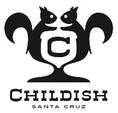let's talk numbers...
At its core, OpenToBuy.co allows you to 1) forecast sales by month for the year, 2) know the average COGS %, 3) identify the key product categories that generate 85%- 90% of your business and the % they each represent of overall sales, 4) initiate beginning inventory at the start of the period based on historical inventory turns, establishing a base inventory level and how much is available each month and for the remainder of the year. Not having this data will lessen the chances of succeeding and potentially cause financial issues with cash, profitability or both.
Here’s an example that illustrates the above points.
Let's begin with a well-operated retail store using OpenToBuy.co.
Store #1
Sales: $1,000,000
COGS 50%: $500,000
Gross Profit: $500,000
Annual Inv Turns: 4.00
Base Inventory: $125,000
Product Categories In alignment with % of total sales
In comparison, here's a retail store NOT using OpenToBuy.co and has no
structured program to purchase inventory.
Store #2
Sales: $950,000
COGS 60%: $570,000
Gross Profit: $380,000
Inventory Turns: 2.5
Base Inventory: $152,000
Product Categories Not aligned with % of total sales
Store #2 shows the issues arising in both cash and profitability from not using OpenToBuy.co. Since they have not aligned their Product Categories % properly they have too much invested in some product categories resulting in stale “slow moving” merchandise that needs to be reduced in price to sell resulting in a $50,000 loss in revenue.
And my lowering sales price of slow-moving goods increases the COGS from 50% to 60% lowering the Gross Profit from $500,000 to $380,000 or $120,000 less in cash into the business.
And due to the slow-moving merchandise, the Annual Inventory Turns were 2.5 rather than 4.0, thus their base inventory was $152,000 rather than $125,000 or $27,000 more in inventory which negatively impacts the cash position of the store.
Here’s an example that illustrates the above points.
Let's begin with a well-operated retail store using OpenToBuy.co.
Store #1
Sales: $1,000,000
COGS 50%: $500,000
Gross Profit: $500,000
Annual Inv Turns: 4.00
Base Inventory: $125,000
Product Categories In alignment with % of total sales
In comparison, here's a retail store NOT using OpenToBuy.co and has no
structured program to purchase inventory.
Store #2
Sales: $950,000
COGS 60%: $570,000
Gross Profit: $380,000
Inventory Turns: 2.5
Base Inventory: $152,000
Product Categories Not aligned with % of total sales
Store #2 shows the issues arising in both cash and profitability from not using OpenToBuy.co. Since they have not aligned their Product Categories % properly they have too much invested in some product categories resulting in stale “slow moving” merchandise that needs to be reduced in price to sell resulting in a $50,000 loss in revenue.
And my lowering sales price of slow-moving goods increases the COGS from 50% to 60% lowering the Gross Profit from $500,000 to $380,000 or $120,000 less in cash into the business.
And due to the slow-moving merchandise, the Annual Inventory Turns were 2.5 rather than 4.0, thus their base inventory was $152,000 rather than $125,000 or $27,000 more in inventory which negatively impacts the cash position of the store.
